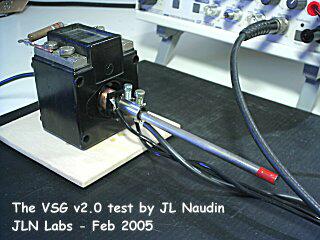
Experimental
design and test of the VSG 2.0
created on February 6, 2005 - JLN
Labs - Last update February 6, 2005
Toutes les
informations et schémas sont publiés gratuitement ( freeware )
et sont destinés ŕ un usage personnel et non commercial
All informations and
diagrams are published freely (freeware) and are intended for a private use and a non commercial
use.
As I have said
previously, the main material used is pure carbon, so, I
have used a pure carbon 6 mm diameter rod (see the analysis
certificate below). To get a free g rays source to initiate the main reaction,
I have used a Thoriated Tungsten rod (6mm diameter) with 2.20% of ThO2.
A radiations counter is able to measure 0.46 µSv/h while the
ambiant level is 0.10 µSv/h. A such electrode (WT20) is commonly
used for TIG and Plasma welding and I have alredy used it
previously in the High Temperature Plasma Electrolysis
experiment (CFR project).
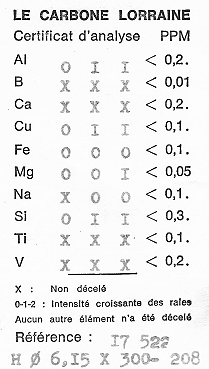
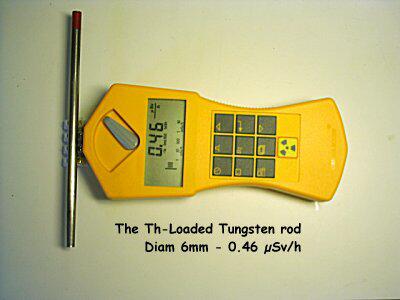
As, the Prof R.L.
Vallée said, one of the most important thing is to get the
Carbon in gaseous phase, this can be simply obtained by the use
of thin spark gap between the Th loaded tungsten rod (used as the
cathod) and the carbon rod (used as the anode). So, when the
strong discharge current pulse is sent between them, some carbon
is vaporised in the B-Field area while some g rays are emitted by the ThO2.
All the required conditions to get the Vallée' Synergetic effect
are gathered...

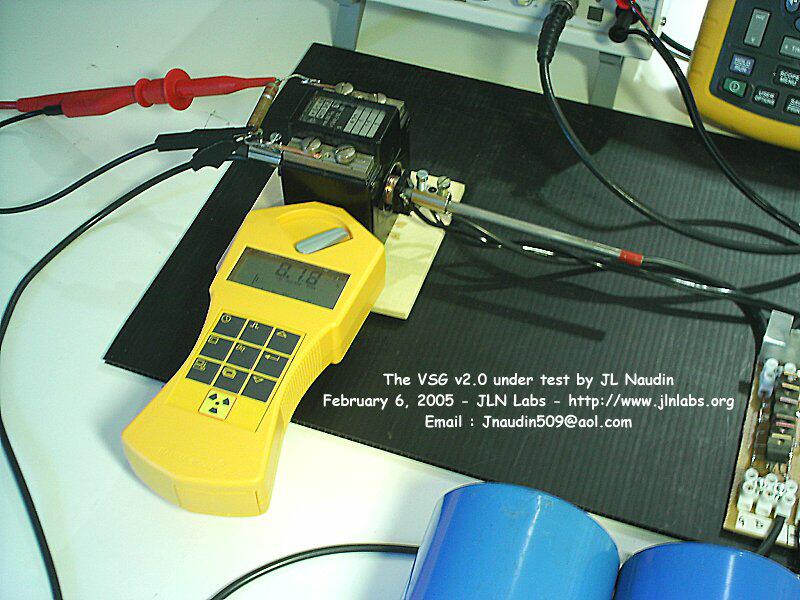
The Carbon and the
Th-Loaded Tungsten rod assembly is inserted in the axis of a
cylindrical coil. The current pulse is measured by a current
transformer (400:1) loaded with a 881 ohms resistor. The nuclear
reaction (if there is one...) is monitored with a radiations
counter. I have used a Gamma-Scout® handheld radiations detector.The
Gamma-Scout® reliably measures alpha, beta, gamma and
X-radiations, it is
the latest development in handheld Geiger counters, designed
specifically for homeland security.
| Radiation
Type |
Alpha,
Beta, Gamma, and X-radiation |
| Detector |
Halogen
filled Geiger - Müller detector (LND712) with mica
end-window
End window density 1.5 - 2 mg/cm2
Stainless-steel housing (.012" wall thickness)
Measuring length 38.1 mm, measuring dia. 9.1 mm
Zero rate <10 pulses per min w/ 3 mm Al and 50 mm Pb
screening |
| Operating
Range |
0.05
µSv/h - 80.00 µSv/h, 0-50,000 cpm (digital)
0.05 µSv/h - 10.00 mSv/hr (analog) |
Sensitivity
|
1000
cpm/mR/hr or 108 pulses referenced to Cobalt-60 radiation
of 1 µSv/h ambient
Alpha - from 4.0 MeV
Beta - from 0.2 MeV
Gamma - from 0.02 MeV |
Below the main
schematic diagram of the VSG v2.0 tested in this experiment.

The
Solid state High Power MosFet driver for the VSG v2.0 based on
the BUZ11 N-Channel MosFET transistor
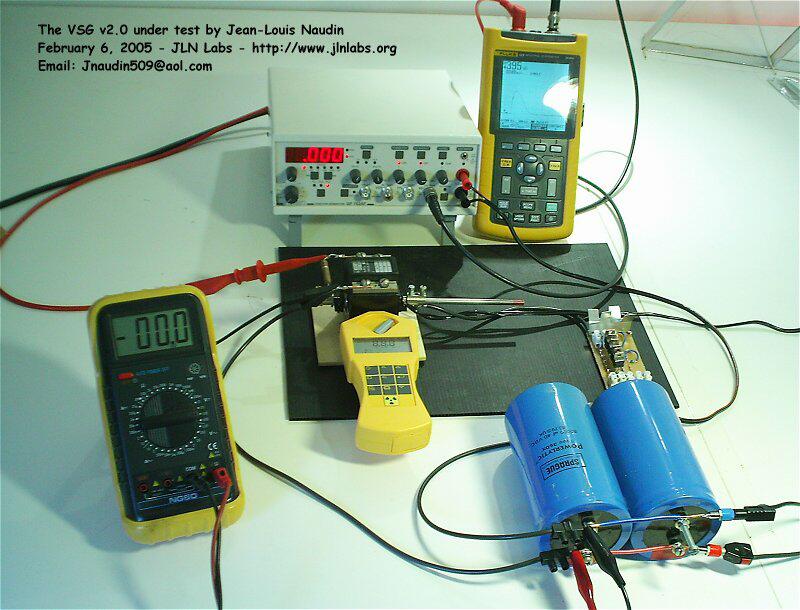
The VSG is now ready to be tested...
VSG 2.0 : Tests results
- February 6, 2005
Tests protocol
:
The two 80000
µF capacitors are fully charged at 37 V.
The function
generator sends a squared pulse to the High Power MosFET
switching circuit. The capacitors are discharged through
the 0.051 ohm resistor and the VSG unit.
The strong
pulse of current is trapped with a current transformer
loaded with a 881 ohms resistor. The voltage accros the
resistor is measured with a Shielded Test Lead STL 120 ( 1:1, 1 Mohms/225 pF ) and
recorded in real time by the digital oscilloscope
Fluke 123.
The radiations
counter is checked for some eventual nuclear reactions.
Two tests have been
performed, the first (blank) test has been conducted without
the B-Field, the second test has been conducted in presence of
a colinear B-Field produced by the long coil placed around
the rods. The B-Field produced by the coil is continuous.
Below, you may see the
recorded voltage accross the Rload resistor with and without the
B-Field. In these scope diagrams, you may notice that the current
pulse is stronger when the colinear B-Field is activated (red curve).
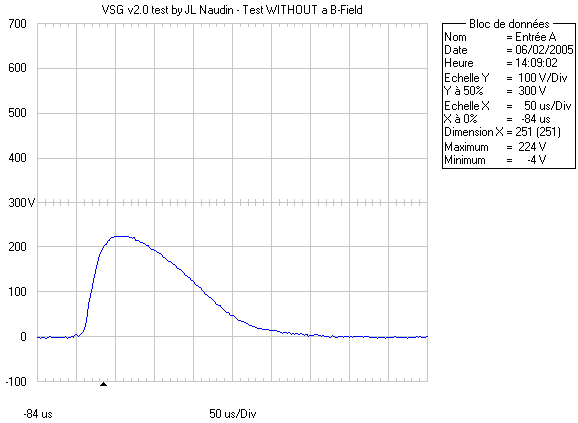
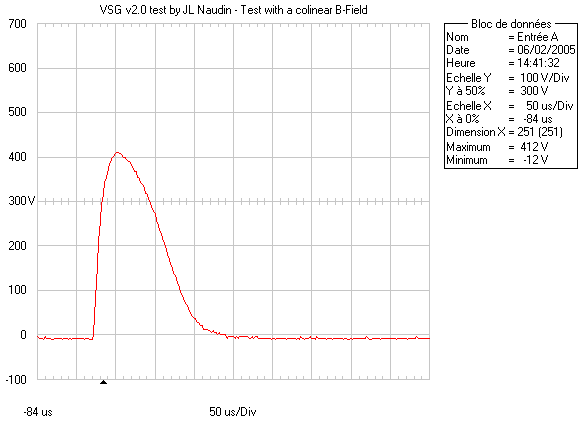
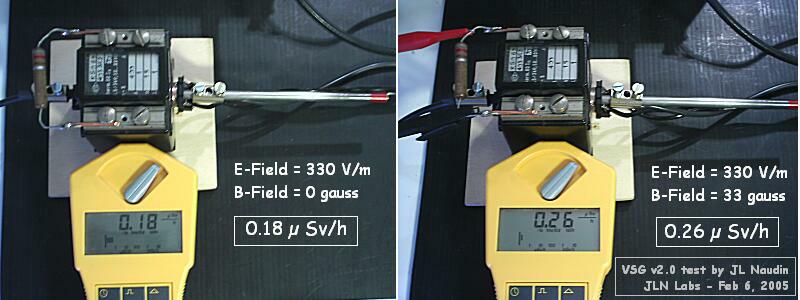
During these VSG tests
the radiations counter has shown a net increase of the radiations
level when the colinear B-Field is used. It is interesting to
notice that the measured radiations remain at least 10 seconds
after that the short current pulse has been sent. This increase
of the radiation level when the conditions are gathered shows
that a nuclear reaction seems to occured.
 Comments about the
radiations level : It is
important to notice that the higher level of the radiation
measured (0.26 µSv/h) here in this VSG experiment is located in
a common ambiant radiations level range. So, the radiations level
measured in this experiment is safe for your health. For exemple,
when you fly in an intercontinental jet liner which flies at
about 15000 meters, the radiation level is about 5 µSv/h, this
is 1.3 time more than in this VSG experiment...
Comments about the
radiations level : It is
important to notice that the higher level of the radiation
measured (0.26 µSv/h) here in this VSG experiment is located in
a common ambiant radiations level range. So, the radiations level
measured in this experiment is safe for your health. For exemple,
when you fly in an intercontinental jet liner which flies at
about 15000 meters, the radiation level is about 5 µSv/h, this
is 1.3 time more than in this VSG experiment...
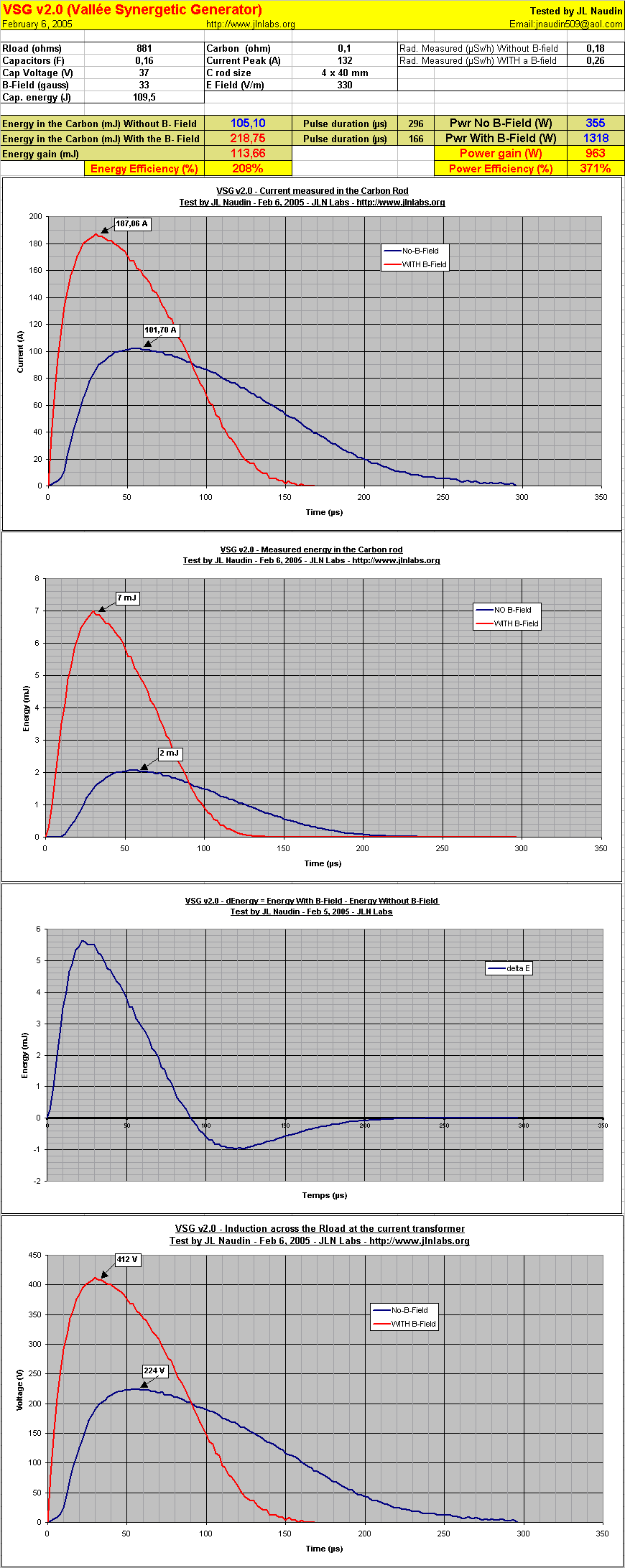
Comments
: These tests of the
VSG v2.0 are very interesting
and need to be developped deeply. If the effects measured during
these tests are not a simple measurement artifact, they can be
directly related to the Prof R.L. Vallée Synergetic theory and
thus, this can be a real breakthrough and opens a new path in
free and clean energy production.
 WARNING, USE
CAUTION ! This
experiment is not intended for the inexperienced. User of
this document should be very carefull and experienced in
the field of electronic and radioactivity to try anything
out ! If you do it the risk of any results is just yours.
I take no responsibility of anything that might happen. WARNING, USE
CAUTION ! This
experiment is not intended for the inexperienced. User of
this document should be very carefull and experienced in
the field of electronic and radioactivity to try anything
out ! If you do it the risk of any results is just yours.
I take no responsibility of anything that might happen. |
Reference
documents :
- BUZ
11 N-Channel Power MosFET Transistor datasheet
- Fiche
de données de sécurité (FDS) - Electrode Tungstčne
Nertal Thorium WT20 selon 91/155/CCE
For more informations : JNaudin509@aol.com
Return
to the VSG page










